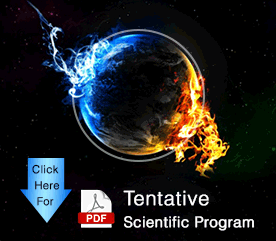
Manal M Zaki
Cairo University, Egypt
Title: A review of heat stroke and its complications in rabbit's productivity and performance
Biography
Biography: Manal M Zaki
Abstract
Still there is a wide gap between meat demand and production in Egypt. Moreover, the cost of feed stuff is very high due to the land-locked situation which leads to an increase in the cost of livestock production. In this context; rabbits provide a new avenue for meat production and could play a major role in enhancing the supply of animal protein. In Egypt, rabbits breeding farms is expanding; this is mainly attributable to the rabbit’s high rate of reproduction, genetic selection potentials, rapid growth rate, early maturity, efficient feed utilization and high value of meat. However, the most obvious limitation to rabbit production in Egypt as an example for south Mediterranean region is hot waves during the summer time, especially during the last two decades. Another limitation is the susceptibility of this species to acclimate with environmental stress. Heat stress mainly occurs when animals are exposed to high ambient temperatures, high humidity, low wind speed, and high direct and indirect solar radiation. The thermo-neutral zone (TNZ) temperature n for rabbits is around 18–21 °C. Therefore, in south Mediterranean region, the high temperature or heat stress, hinder the success of rabbit farming, as it leads to a significant reduction in the daily weight gain, daily feed intake and feed efficiency. Similarly, the milk yield of does maximized at 15°C ambient temperature was reduced by 7.7 g milk / 1°C rise in the temperature. Within 25-28°C of ambient temperature, rabbits decrease their feed consumption and require more digestible energy. At 30°C, the average feed consumption was reported to be decreased by 30% and growth was affected as well. Furthermore, disturbances in feed intake, feed utilization, water metabolism, blood parameters, enzymatic reactions, and hormonal secretions. In addition, protein, energy and mineral imbalances had been also reported to be disrupted in heat-stressed rabbits. The possible way to improve rabbit's productivity is improving heat new breeds that genetically able to be acclimatized with heat stress. Nutritional requirement and/or hygienic conditions are also recommended as helpful solutions. From another perspective, the effects of heat stress on rabbit's immune response has been extensively discussed in the last two decades showing how the thymus weight decreased and circulating T lymphocyte counts were declined. Others studies, also reported that heat stress directly affects the immune system cells, decreasing the number of viable cells and the number of receptors on the immune cells surface reducing the proliferative capacity of lymphocyte and the neutrophil function. Also, inhibiting the differentiation of B lymphocytes into antibody-secreting cells as well as decreasing immunoglobulin and cytokines production and increasing in heat-shock proteins synthesis by lymphocytes. Finally, it could be concluded that rabbit may be grown in hot climates, but with low high anticipated low productive and reproductive performance. Therefore, we recommend that applying rabbit breeding programs as a suitable solution for producing suitable breeds to be grown in hot climates.

